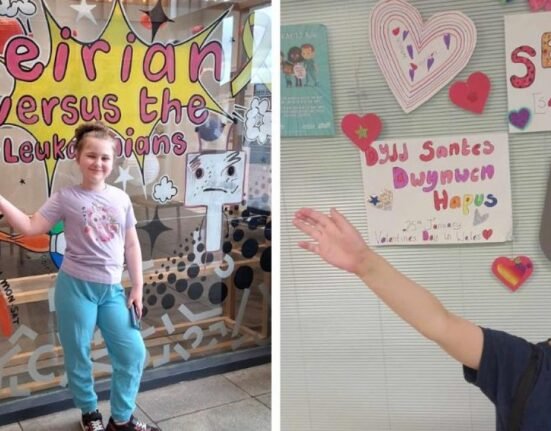
Maira Rodriguez, a teacher at Ferndale Elementary in Humboldt County, participates in professional learning.
Credit: Joanna Galicha / the Humboldt County Office of Education
California voters demonstrated their commitment to arts education in our schools with the passage of Proposition 28, which brings unprecedented resources for teaching the arts to every school in California. The state also adopted a forward-looking arts standards and curriculum framework and reinstated theater and dance credentials.
But truly realizing the potential of that commitment requires arts teachers who are fully prepared to teach the arts.
Unfortunately, California currently faces a statewide shortage of credentialed and classified PK-12 educators, especially multiple-subject and single-subject arts credentialed educators. The California Commission on Teacher Credentialing’s most recent data show a decrease in new arts teachers. Currently, only 3% of all credentialed teachers hold a single-subject credential in the arts. In the 2021-22 school year, California had about 7,500 teachers with clear arts credentials. This works out to be one teacher with a single-subject arts credential for every 785 California public school students.
upcoming roundtable | march 21
Can arts education help transform California schools?
In an era of chronic absenteeism and dismal test scores, can the arts help bring the joy of learning back to a generation bruised by the pandemic?
Join EdSource on March 21 at 3 p.m. for a behind-the-scenes look at how arts education transforms learning in California classrooms as schools begin to implement Prop. 28.
Save your spot
The thousands of new teachers needed to expand access to arts education will take years to recruit and prepare. With this persistent statewide hiring challenge, we urge immediate attention from state policymakers and district leaders to provide high-quality differentiated professional learning for arts educators already in classrooms and preparation programs. Professional learning is a critical component of California’s arts education infrastructure. Teachers are not a monolith and have a wide range of professional learning needs and interests. So we need tailored professional learning for a wide variety of arts educators, including:
- Intern teachers. While data from the Commission on Teacher Credentialing shows that the arts have fewer intern teachers than the other single-subject areas on average, internships can offer a shorter path to the classroom. Since intern teachers are at the start of their teaching careers, key factors for keeping them in the classroom include mentoring, interaction with professional learning communities (PLCs), and networks of other arts teachers.
- Teachers, especially those with out-of-state preparation. These teachers will continue to need professional development in the recently adopted state framework and standards. The California Arts Education Framework for Public Schools, adopted in 2020, did not have a robust statewide rollout due to the pandemic and is an essential resource for new and established teachers. Funding professional learning in this area will benefit teachers trained in- and out-of-state.
- “Ineffective” credentials. According to California Department of Education data, arts students in California are more likely to be taught by an educator with an “out-of-field” or “ineffective” credential than students in other subject areas. While institutions prepare new arts educators, professional learning must be widely available, easily accessed and responsive to the many needs of educators who are already teaching but who may be classified by the State Board of Education as “ineffective” due to having out-of-field credentials and permits. Ideally, all educators charged with teaching the arts should be credentialed in the arts discipline they teach. In the meantime, professional learning can help build capacity and increase effectiveness to better support and equip teachers to teach arts content.
- Elementary teachers. The distribution of teachers with single-subject arts credentials is not evenly spread across grade levels. More than 75% of credentialed arts teachers work in sixth through 12th grades. As a result, teachers with multiple-subject credentials are a vital arts education provider to elementary students. Besides being required in the California education code, arts education in elementary schools is an essential foundation that enables students, by middle and high school, to be successful in arts courses that meet the A-G admission requirements for University of California and California State University or in a career technical arts, media and entertainment pathway to prepare for a career.
- Multiple-subject teachers. They make up the largest group of credentialed educators in California, and research shows that multiple-subject teachers who integrate the arts in their teaching are reinvigorated and more engaged. Incorporating more preparation in the arts for multiple-subject credentialed teachers, through summer intensives, and job-embedded training builds teacher knowledge, skills and confidence in the arts while supporting arts learning across all grade levels.
To meet such diverse needs, California needs support from the legislators, policymakers, higher education institutions, and PK-12 professional learning providers. The professional learning infrastructure exists, and there are many avenues across the state for high-quality professional learning. Prioritizing funding toward high-quality professional learning helps advance the intent of Proposition 28.
We must nurture and strengthen the entire system. Policymakers must advocate for a robust statewide funding effort similar to past models such as health education, history-social science, ethnic studies, mathematics, science, and computer science. Building capacity through professional learning for those already in classrooms and in teacher preparation programs should be funded and prioritized. There are many organizations across the state already engaged in effective professional learning, and these efforts are necessary to build our human capacity to fully realize the promise of Proposition 28.
•••
Letty Kraus is director of the California County Superintendents Arts Initiative, which works through the 58 county offices of education to support high quality, sequential, standards-based arts education for all students in California.
Patti Saraniero is principal of Moxie Research, a research and evaluation firm serving arts, culture, science and educational organizations.
The opinions in this commentary are those of the authors. If you would like to submit a commentary, please review our guidelines and contact us.







